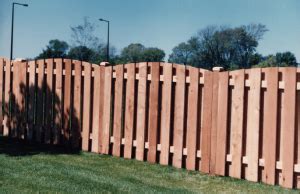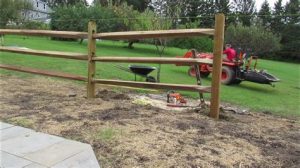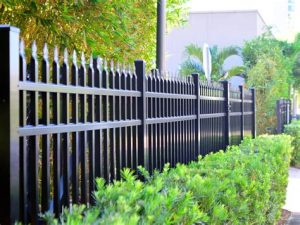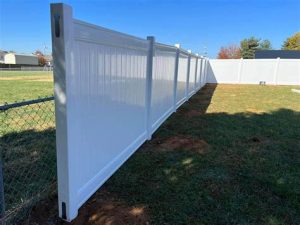Learn how to understand property line boundaries, obtain surveys, analyze zoning codes, consult neighbors, and accurately mark your property lines.When it comes to enhancing your property’s security and aesthetics, installing a fence can be a fantastic investment. However, before you dive into selecting materials and designs, it’s crucial to ensure that you fully understand your property lines. Inaccurate placement can lead to disputes with neighbors, legal complications, and costly adjustments. This blog post will guide you through the essential steps of assessing your property lines, starting with a clear definition of boundaries and the importance of obtaining a professional survey. We’ll also explore local zoning and building codes, the significance of consulting with neighbors and authorities, and effective methods for accurately marking your property lines. By following these guidelines, you can ensure a smooth and hassle-free fencing project that maintains good relations with those around you.
Understanding property line boundaries
When it comes to installing a fence on your property, one of the most important steps is understanding your property line boundaries. Knowing exactly where your property begins and ends can save you from potential disputes with neighbors and ensure that your installation complies with local regulations.
Most properties are defined by their legal descriptions, which can be complex. Often, these descriptions are derived from surveys, which detail the dimensions and angles of your land. To find an accurate outline of your land, consider obtaining a professional surveyor who can identify the property line boundaries with precision.
In many cases, property lines can be visually marked using physical markers such as stakes or special paints. This can help provide a clear visual reference during your project, preventing any accidental encroachments onto neighboring properties. Always remember to check with local regulations to ensure you are compliant when marking your property lines.
Obtaining a survey of your property
When it comes to installing a fence, one of the most crucial steps is obtaining a survey of your property. A property survey is an official measurement that defines where your property begins and ends. It provides you with the precise property line boundaries and any existing easements or encroachments. Understanding these details can save you from potential legal issues and ensure your fence installation adheres to local regulations.
Several types of surveys exist, including boundary surveys, which delineate property lines, and topographic surveys, which illustrate the elevation and lay of the land. Engaging a licensed surveyor is essential for an accurate assessment. They use specialized tools and techniques to pinpoint important markers and provide documentation that may be necessary for local authorities.
Additionally, having a current survey can prevent disputes with neighbors regarding property boundaries. If you’re unsure about where to start, consider contacting your local government or real estate offices for recommendations on reputable surveyors in your area. In short, obtaining a survey is an investment that lays a solid groundwork for any future property modifications, particularly when it comes to erecting a fence.
Analyzing local zoning and building codes
When it comes to installing a fence, one of the most crucial steps is analyzing local zoning and building codes. These codes are put in place by local governments to manage land use and ensure that developments adhere to safety and aesthetic standards. Understanding these regulations can save you time, money, and potential legal troubles down the line.
Many municipalities have specific height restrictions, setback requirements, and fencing materials that are permitted in residential areas. For instance, you might find that wooden fences are acceptable while chain-link fences are not allowed in certain neighborhoods. It’s essential to check these regulations before making any decisions about your fence installation.
In addition to ensuring compliance with local laws, being aware of neighborhood zoning regulations can help foster better relationships with your neighbors. Consulting local authorities can also clarify any ambiguities in the codes, ensuring that your fencing project goes smoothly and meets all legal requirements.
Consulting with neighbors and local authorities
When planning to install a fence on your property, it’s crucial to consult with neighbors and local authorities. Open communication with those who live near you can prevent potential conflicts and misunderstandings. Your neighbors may have valuable insights about property boundaries and might even have dealt with similar projects before.
Additionally, local authorities can provide the necessary information regarding any zoning regulations or building codes that must be adhered to. Some municipalities have specific rules about fence heights, materials, and placement that you need to be aware of before you start your installation. Engaging with these officials early in the process can save you time and money by avoiding any potential fines or required changes later.
- Start a Conversation: Talk to your neighbors about your plans; they may have concerns or preferences.
- Check Local Codes: Visit your local city or county website to review fencing regulations.
- Seek Permits: If required, submit any necessary applications to the relevant local authorities.
By taking these proactive steps, you can ensure that your fencing project goes smoothly and adheres to all required regulations while fostering good relationships with your neighbors.
Marking the property lines accurately
When it comes to installing a fence, one of the most crucial aspects is marking the property lines accurately. This process not only helps you stay within your legal boundaries but also prevents disputes with neighbors in the future. Accurately determining where your property begins and ends can save you time, money, and potential legal headaches.
There are several methods to ensure you are accurately marking the boundaries. Start by consulting your property deed, which will provide specific details regarding your property lines. Additionally, using tools such as stakes, string, and measuring tape can help visualize the boundary before you commit to any permanent installations.
It may also be beneficial to seek professional assistance. Hiring a surveyor can not only provide you with precise measurements but can also offer peace of mind knowing your fence will be compliant with local regulations. Remember, taking the time to properly mark your property lines can enhance the overall success of your fencing project.
Frequently Asked Questions
Why is it important to assess property lines before installing a fence?
Assessing property lines is crucial to ensure the fence is built within your boundaries, avoiding disputes with neighbors and potential legal issues.
What tools can I use to determine my property lines?
You can use tools like a property survey, a compass, a tape measure, or even online mapping resources to accurately identify your property lines.
What are the consequences of building a fence on my neighbor’s property?
Building a fence on your neighbor’s property can lead to disputes, potential legal action, and the requirement to remove the fence, resulting in wasted time and money.
How can I obtain a property survey?
You can obtain a property survey by hiring a licensed surveyor, who will measure and map out the boundaries of your property based on legal descriptions and local regulations.
What should I do if I cannot find my property lines?
If you cannot find your property lines, consider contacting a professional surveyor or your local county offices, which may have records of property lines and surveys.
Do local zoning laws affect fence installation?
Yes, local zoning laws can dictate where you can place a fence, its height, and materials used, so it’s important to check local regulations before proceeding.
What if my neighbor disagrees with my assessment of the property line?
If a disagreement arises, it’s best to discuss it calmly with your neighbor and consider involving a professional surveyor to provide an unbiased assessment.





